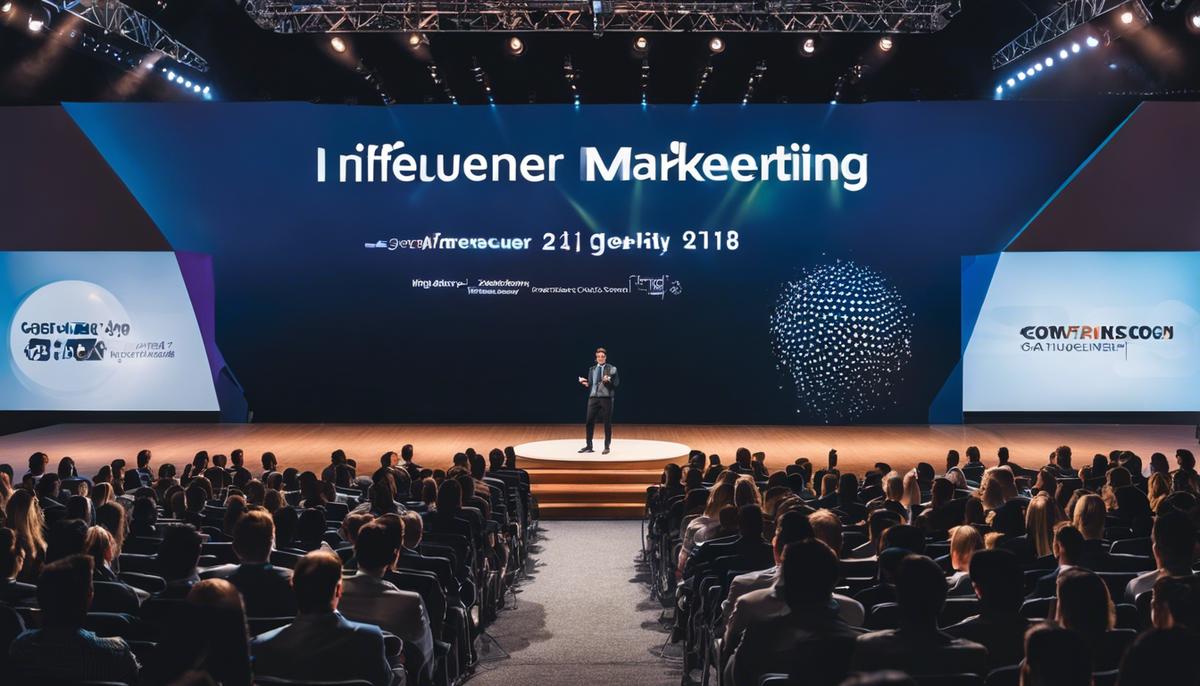As the digital era has paved the way for a boom in innovative marketing strategies, influencer marketing has emerged as a key player in engaging and attracting customers. For businesses operating in this digital age, it’s vital to understand the ins and outs of this marketing phenomenon. From its humble beginnings to its current status, influencer marketing has evolved into a potent tool that can amplify brand awareness, uplift reputation, and ignite growth. Central to this narrative are influencers, individuals who have the power to affect the purchasing decisions of others owing to their credibility, knowledge, or relationship with their audience. The impact of various types of influencers on customer behavior forms a cornerstone of this discourse.
Understanding Influencer Marketing
With the rapid proliferation of social media, the paradigm of marketing has dramatically shifted. The power has largely moved from traditional ad agencies to a new generation of influencers – individuals who harness their substantial online followings to shape market trends and drive consumer behavior. This new perspective illuminates why influencer marketing has become an indispensable tool in this digital age.
Juxtaposed to conventional advertising methods, where brands broadcasted their message to a passive audience, influencer marketing humanizes the process. Brands can now engage directly with a potential consumer through the mutual trust established by an influencer. This engagement emulates one-on-one interaction, thus making the conveyed message more influential and persuasive.
Take for example the beauty industry. Previously, consumers relied on promotional ads or sales representatives for product recommendations. But now, they turn to beauty bloggers who through their tried-and-tested recommendations offer a sincere and upfront route to making purchase decisions.
It has been established by several studies that consumers trust recommendations from a respected source more than an advertisement. Psychologically, we lean towards what is endorsed by people we admire, trust, or aspire to become. The influencer, in this case, serves as the trusted source providing the endorsement.
Also, let’s not overlook the mass reach of influencers. Their social media handles are platforms where they engage with their vast and loyal followers. They craft content that resonates with their followers, and brands sponsoring the content can directly reach a large, curated and engaged audience passionate about the influencer’s niche.
Influencer marketing is less intrusive. As consumers, we are turned off by invasive ads while browsing our favorite websites or social platforms. With influencer marketing, the brand message seamlessly integrates into the influencer’s content narrative, allowing for an organic fit rather than being an unpleasant interruption.
Moreover, the power of influencer marketing extends to its capacity for fostering strong brand advocacy. The influencer’s followers become devoted brand ambassadors who further multiply the message reach by platforms sharing, commenting, and recommending.
Additionally, in this age of information overload, innovative brands are focusing more on micro-influencers, who despite smaller followings, have a tight-knit, highly engaged audience. This shift towards micro-influencer marketing is making the tool even more potent, allowing for a targeted, hyper-local approach to reaching potential consumers.
Lastly, the genius of influencer marketing lies in its scalability. From startups to multinational corporations, businesses across the spectrum can leverage influencer marketing to enhance their outreach, given they select the right influencer aligned with their brand values and target audience.
In conclusion, influencer marketing holds immense potential in this digital age, offering human connection, credibility, reach, and effective engagement. It’s a power tool that is redefining the marketing strategies for the modern world. With its scalability, adaptability, and powerful impact, influencer marketing is not just a fleeting trend but rather a robust business approach offering lucrative returns.

Best Practices of Influencer Marketing
Building on the foundational knowledge of influencer marketing, let’s explore the proven tactics and innovative strategies for leveraging this powerful marketing tool. Understand, this is not just about finding a famous individual and getting your product into their hands; it’s about utilizing strategic networks and targeted messaging to amplify your brand’s reach and impact.
One key strategy is to select influencers in your niche who exhibit the same values and authenticity as your brand. Affiliating your product or service with a person who understands and is passionate about your business ethos can lend credibility and enhance your brand image. For example, if your company specializes in sustainable living products, partnering with an influencer who actively promotes an eco-conscious lifestyle can significantly boost your brand’s resonance.
Another proven practice is crafting structured but flexible influencer contracts. Set clear expectations within your agreements regarding the type of content, frequency, and timeline. However, allow room for creative freedom. Remember, they are influencers for a reason; their unique style and approach have earned them their dedicated follower-base. Trust their personal touch in content creation to engage audiences more effectively.
Let’s not overlook the power of an integrated cross-platform campaign. This strategy involves consistent collaboration across multiple digital platforms such as blogs, YouTube, Instagram, and Snapchat. Such well-coordinated campaigns across several platforms multiply impressions, broaden your reach, and generate higher engagement rates.
Are influencer partnerships only for big-ticket promotions or product launches? Absolutely not! Encourage constant content generation from your influencers; this regularity aids in maintaining top-of-mind recall for consumers and nurturing a long-term relationship between your influencer and your audience.
As you explore influencer marketing, consider the importance of metrics and performance measurements. Analytics should be at the forefront of your campaign – focus not just on follower counts, but delve deeper into audience engagement. Comments, likes, shares, video views, and click-through rates are the real indicators of a successful influencer marketing campaign.
Last but not least, remember to embrace the innovative nature of influencer marketing — don’t limit yourself to traditional methods. Given the rapidly evolving digital landscape, new influential platforms continue to emerge. Be open to leveraging these fresh avenues. TikTok, Clubhouse, or the next trending space could be your brand’s new frontier for reaching target consumers.
In today’s dynamic business world, influencer marketing is more than just turning heads; it’s about winning hearts. Strategically executed partnerships, centered around authenticity and shared values, can indeed leave a lasting impression in the jam-packed digital bazaar. From carefully selected influencers and structured contracts to cross-platform campaigns and consistent metrics tracking, influencer marketing reaffirms its position as a potent tool in the marketing arsenal, constantly redefining the parameters of brand advocacy, consumer engagement, and business success.

The Future of Influencer Marketing
As future-focused entrepreneurs and business leaders, recognizing game-changing trends and capitalizing on them is crucial. One undeniable force that continues to revolutionize the business landscapes across all industries is influencer marketing. The next frontier, then, is deciphering where these trends will lead us. With the introductions and reflections set aside, let’s dive into the potential trajectory of this type of marketing.
Predictive Artificial Intelligence (AI) will play a significant role in shaping the future of influencer marketing. As AI technology evolves, brands and businesses will be able to leverage it to identify potential influencers who are most likely to resonate with their target audiences based on data-driven insights. Not only will this enhance the efficiency and effectiveness of influencer selection, it will also minimize guesswork, resulting in better ROI.
Furthermore, trust and credibility will continue to be pivotal in the influencer marketing field. Consumers are becoming increasingly discerning in recognizing authentic content and relationships. As a result, expect a solidifying trend in which brands strategically partner with influencers based not only on reach, but also on the authenticity and connection with their audience.
Expect increased personalization in influencer marketing as brands strive to deliver tailored messages to niche audiences. Instead of a one-size-fits-all campaign, anticipate complexly woven storytelling experiences. This new wave of influencer marketing will be focused more on creating deep connections with the targeted audience on a personal level.
Moreover, with the growing popularity of different social media platforms, the lines between them will increasingly blur. Influencers will have to adapt and cater their content to fit the specifications and preferences of each platform, thus creating a seamless brand experience for their followers across all digital platforms.
Influencer marketing arsenal will evolve beyond the traditional visual content. Emerging technologies like virtual and augmented reality, 360-degree footage, and live streaming will play an instrumental role in the creation of immersive and engaging experiences. These technologies offer vast untapped potential for both the influencers and brands they represent.
Moreover, as transparency becomes increasingly important in marketing due to evolving regulations and growing consumer demand, expect a rise of standardized disclosures in influencer marketing. This is a step forward towards dismantling potential skepticism from consumers and fostering a more transparent relationship between brands, influencers, and their audience.
Lastly, businesses will keep a more transparent and accurate track of their ROI from influencer marketing. The focus will shift from merely tracking vanity metrics like likes and comments to scrutinizing cost per engagement, conversion rates, and other data that clearly reflect the effectiveness of an influencer campaign.
In a nutshell, the future of influencer marketing appears to be intertwined with advancements in technology, adherence to authenticity, deep personalization, utilization of varying platforms, transparency, and refined ROI measurement. This information is not merely for consumption – it essentially serves as a playbook we should utilize to stay ahead of the curve, presenting a robust opportunity to enhance business competitiveness and growth.

As we look ahead, the landscape of influencer marketing stands on the brink of more exciting changes. Fueled by the evolution of social media platforms, an increasing value placed on micro and nano influencers, and relentless advancements in technology such as Artificial Intelligence and Virtual Reality, it is poised for a revolution. And let’s not forget the consumers who are becoming more discerning and are continuously reshaping the market with their changing behavior. The future of influencer marketing presents infinite opportunities and challenges. Navigating this complex future will require knowledge, creativity, and anticipation of emerging trends to continue to leverage influencer marketing as a powerful tool for business growth and success.






